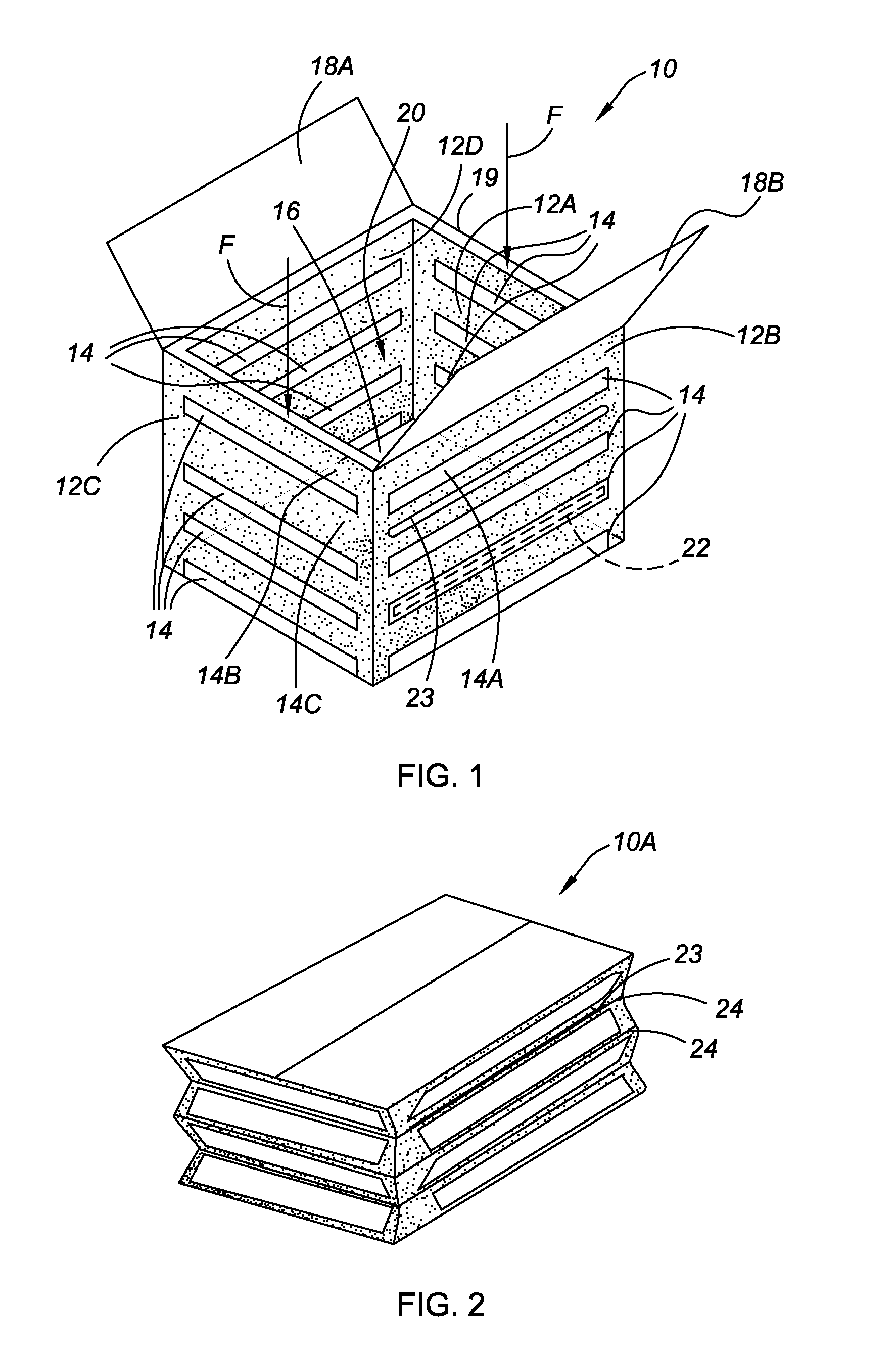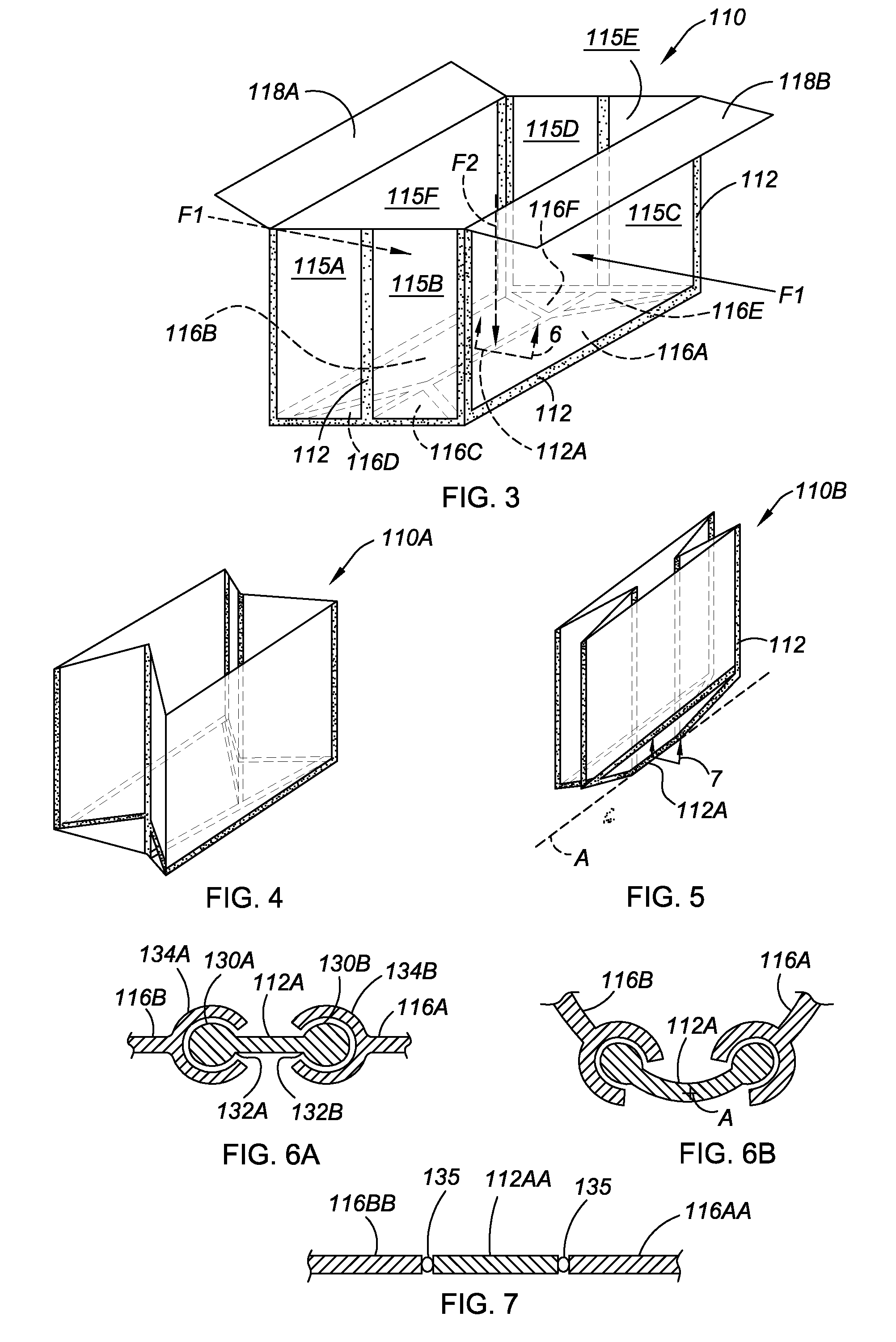Reconfigurable container and methods of fabrication and use thereof
a technology of reconfigurable containers and active materials, applied in the field of reconfigurable containers, can solve the problems of imposing a significant transportation cost burden on re-use of shipping containers, affecting the economic viability of storage containers after only one use, and affecting the economic viability of storage containers, so as to improve the compactness, reduce the modulus of elasticity of deformable active material members, and enhance the collapsibility of containers
- Summary
- Abstract
- Description
- Claims
- Application Information
AI Technical Summary
Benefits of technology
Problems solved by technology
Method used
Image
Examples
first embodiment
[0039]Referring to the drawings, wherein like reference numbers refer to like components, FIG. 1 shows a reconfigurable container 10, incorporating SMP deformable members 12A, 12B, 12C and 12D (also referred to herein as deformable active material members), largely forming sidewalls of the container 10, and which may be referred to herein as sidewalls, in an internally stress-free state. Portions of the deformable members 12A-12D are separated by rigid, non-SMP containment members which, in this embodiment, are elongated reinforcement members 14 spaced from one another on each of the deformable members 12A-12D, and here shown as offset from one another on abutting sidewalls (e.g. reinforcement member 14A is at a vertical elevation on the container 10 between that of the reinforcement members 14B and 14C). It should be appreciated that the non-SMP reinforcement members are optional and that, within the scope of the invention, the entire reconfigurable container 10 may be of a deforma...
third embodiment
[0049]a container 210 is shown in FIGS. 8 and 9. In FIG. 8, the container 210 is in a fully collapsed configuration and in FIG. 9 the container is shown in fragmentary view in an intermediate configuration 210A transitioning to a deployed configuration (not shown, but which will resemble the overall shape of the container 110 of FIG. 3). In this embodiment, containment members include: sidewalls 215A, 215B, 215C and 215D; lower closure member or base 216; and upper closure members or cover flaps 218A, 218B, hingeably connected to the upper edges of the opposing sidewalls 215C and 215D, or, not shown, a single closure hingeably attached to the upper edge of only one of the sidewalls 215A-215D.
[0050]An SMP deformable active material member 212 surrounds the edges of the base 216 to connect and secure the sidewalls 215A-215D to the base 216. The deformable active material member may be secured to the base 216 and sidewalls 215A-215D through welding, adhesives, mechanical fasteners, and...
PUM
| Property | Measurement | Unit |
|---|---|---|
| glass transition temperature | aaaaa | aaaaa |
| glass transition temperature | aaaaa | aaaaa |
| glass transition temperature | aaaaa | aaaaa |
Abstract
Description
Claims
Application Information
 Login to View More
Login to View More - R&D
- Intellectual Property
- Life Sciences
- Materials
- Tech Scout
- Unparalleled Data Quality
- Higher Quality Content
- 60% Fewer Hallucinations
Browse by: Latest US Patents, China's latest patents, Technical Efficacy Thesaurus, Application Domain, Technology Topic, Popular Technical Reports.
© 2025 PatSnap. All rights reserved.Legal|Privacy policy|Modern Slavery Act Transparency Statement|Sitemap|About US| Contact US: help@patsnap.com



